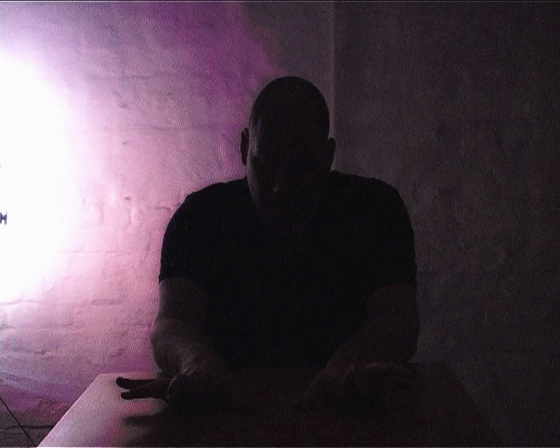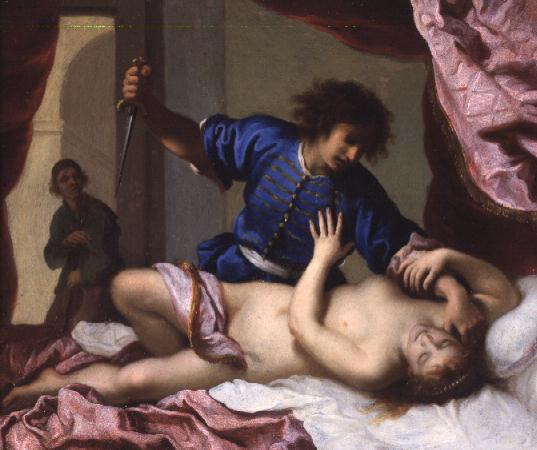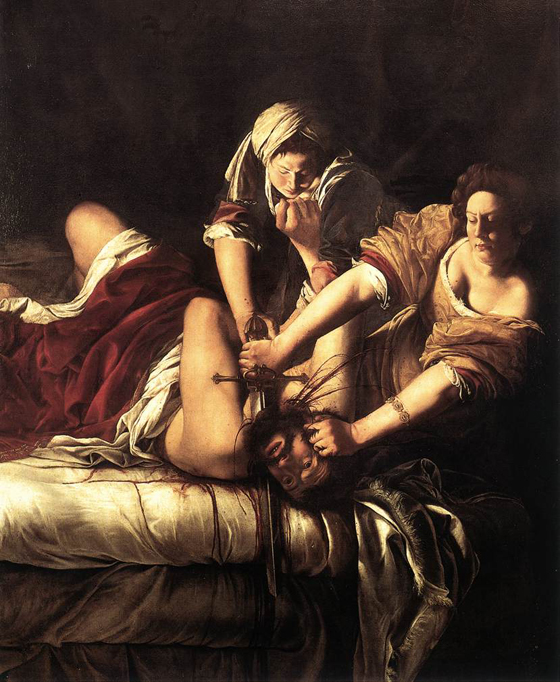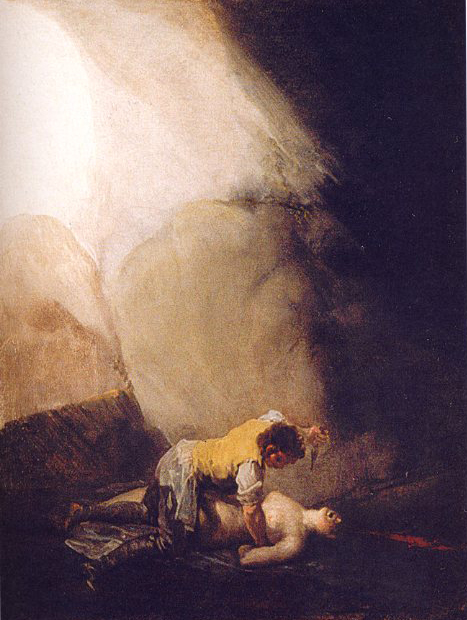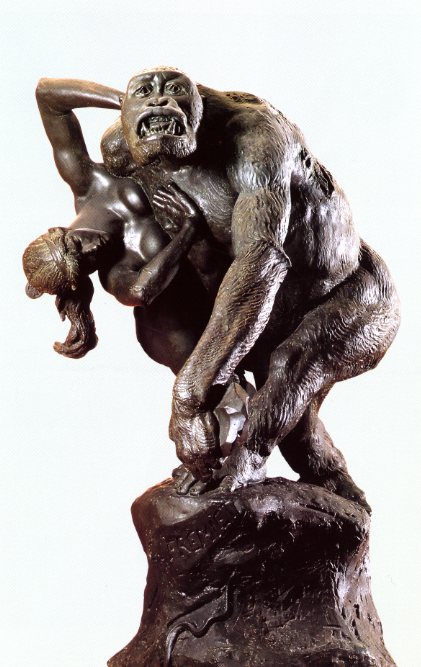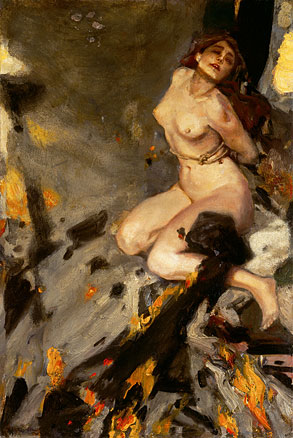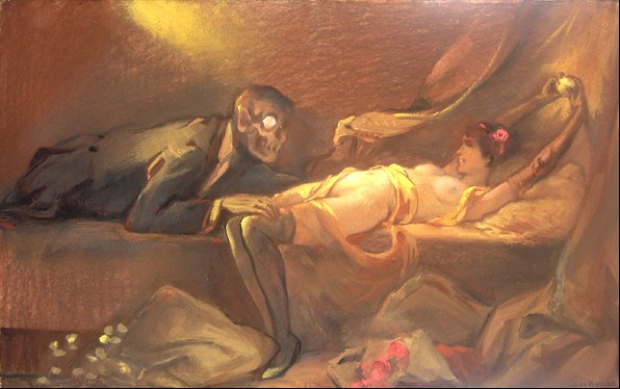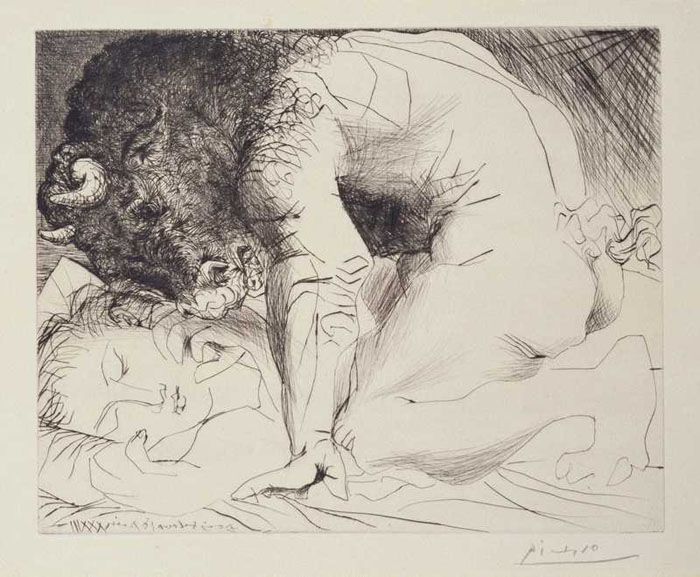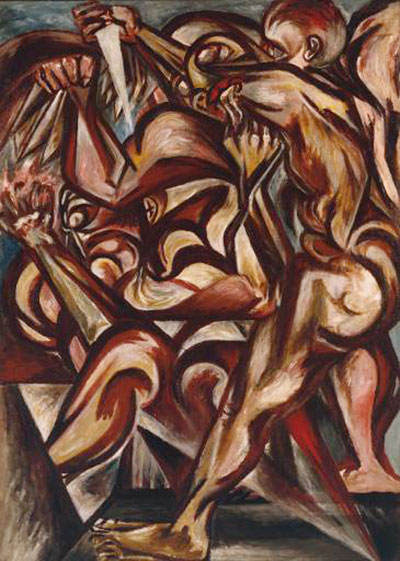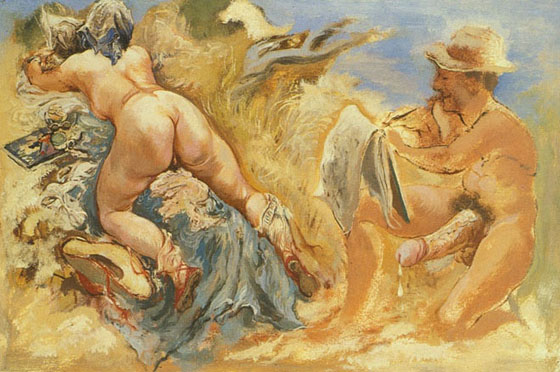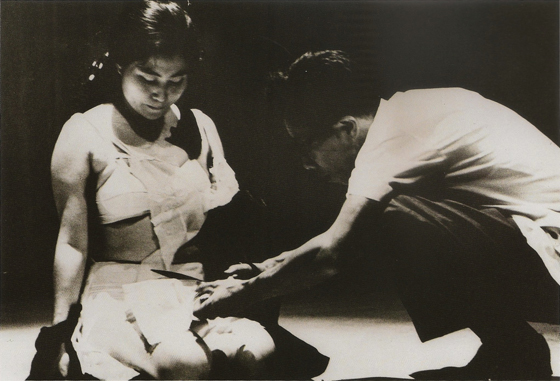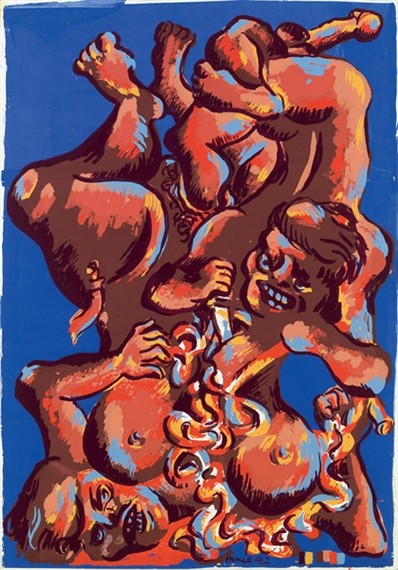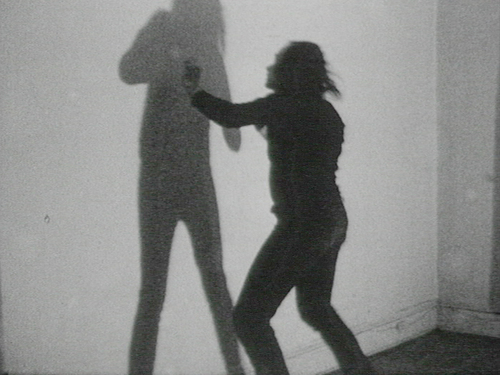Colour Me Dead - Chapter 10
The Impotent Rage - excerpt (single-screen compile) 2 minutes, mono © 2015Background
The Impotent Rage is the 10th production in the 18-part series of films, animations and prints collectively titled Colour Me Dead. All the productions in this project are based on research which is forming the basis for the in-development book Colour Me Dead: Art, Sex & Psychos.
In the 18 short sequences of The Impotent Rage, an actor portrays an anonymous 'everyman' internet chatroom sex addict. He sits facing his webcam, in his mind narrating delusional fantasy scenarios involving his commandeering control over women under his gaze. We hear his thoughts in voice-over, as he talks Gonzo-style as if directing a porn film, dictating what the unseen woman should be doing, how to do it, and for how long. He represents the ideal user of interactive online porn. Yet we don't see what he sees: in place, we have the other side of the screen, showing what the porn user looks like, rather than what porn provides for its users. A silent intertitle streams on a rolling banner atop each video, naming the artist and artwork described through his rant.
The Impotent Rage is displayed on 6 cheap monitors, each looping 3 of the 18 short videos. The audio is played through headphones. The 6 monitors are gathered onto desks as in an internet cafe. Office chairs, desk lamps, tissue boxes are included.
Credits
Chatroom user: Emile Zile
Voice-over: Philip Brophy
Script, direction, camera, editing, mix: Philip Brophy
Overview
If the louder one’s rage, the greater one’s impotency, than the waves of Romantic, Heroic and Historical painting from the 16th C. through to the early 20th C. depicting the battle of sexes resoundingly attest to Man’s erectile dysfunction. Numerous narratives of overpowering women from Greek mythology, Christian Apocrypha and the Judea-Christian bibles have long attracted male artists. Woman’s strength, resolve and control could be simultaneously celebrated and condemned. Her seductive powers and deadly allure to the male artist lent his paintings and sculptures erotic appeal tinged with nausea. Rapes, trials, ostracism and burnings were commonplace. Woman’s body would often titillate centre-stage like pre-Surreal objects of desire rupturing jurisprudent scenarios.
Such conjuring of the female form wafts throughout much of the work cited in Colour Me Dead. The Impotent Rage targets those artworks covered with the spittle of condemnation and enflamed by artists’ raging temples as they uncontrollably vent their inadequacy at the feet of the muse they worship. Their pictorialisations render men impotent, and can be chronologically charted from defaced Christian idols of Mary to saucy fantasias of Bathsheba, Judith, Europa and Lucretia, to Godly expulsions of Eve and her lineage, to naked executions of anonymous seductresses in witch burnings. Time and again, these condemnations do little to hide the overriding threat these sensual succubi and femme fatales hold for mankind. By the 19th C., socially-oriented paintings chimed in, aligning Woman with syphilis epidemics and spoils of war to be ravaged and executed. With Surrealists becoming minotaurs and pistons, and Expressionists gripping daggers and penises, the history of art can be lensed as much the product of serial killers as artists.
The Impotent Rage - Chat 17 © 2015Technical
Production
To recreate the lo-fi grain of online cam-sessions and chat-videos, The Impotent Rage was shot on DV-CAM. A 'void' set was configured, with a plain wooden desk in front of a white brick wall in front of which is hung large sheets of clear plastic. The space resembles either a newly tenanted cheap flat still to be painted, or an equally cheap and remote apartment whose lack of Ikea-ised interior personality evokes the blank world of the bedroom psychotic. Emile provided a range of T-shirts, shirts and jackets resplendent in thrift store elegance.
18 portraits were shot of Emile performing the character of an anonymous chat room trawler. Each were single shots lasting around 3-4 minutes, so as to allow a maximum duration of performed possibilities. Emile is always looking just below the camera lens, simulating the perspective of him engaged in looking at something unseen. 9 were shot with Emile in fixed position, with each video trying out a performative type or set of ticks and mannerisms familiar to anyone who has watched their own image in Skype sessions. The next 9 portraits involved random props which Emile worked with in some manner. These portraits are more distracted and sometimes disengage from the act of looking: Emile sometimes enters or exits the frame, and is often as much looking somewhere else. For each of the 18 portraits, the lighting was changed to suggest not only different times of day or night (as the environment is airless and windowless) but more so different moments or phases in the character's behavioural schedule and bio-sexual clock. A mix of two lights were used to maintain the lo-fi grain: a domestic 70w desk lamp, and a dimmable LED fluoro bank.
The Impotent Rage - Chat 16 © 2015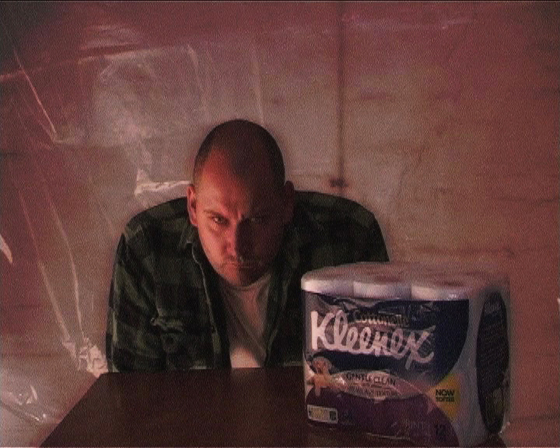
Voice
The voice-overs were recorded in single takes; the 18 were recorded in under an hour. Each one was wholly improvised, with no pre-planning prior to looking at each image and automatically getting into character and blurting out deluded fantasies of power and control. Some take on the guise of the megalomaniac film director, pushing and shoving his actors like plasticine puppets; others evolve as pathetic therapeutic releases of pent-up frustration; all exhibit the crucial mix of being drunk on one's own imagination while simultaneously living in a purgatory of failure. An intuitive and sometimes random approach was taken in matching the voice-overs to the filmed performances - partly inspired by Pudovkin's famous experiment in emotional conveyance through impassive facial performance; partly inspired by how the face can just as easily hide all it feels.
The improvised rants fuse self-loathing, self-hatred and self-pleasuring in 18 closeted spectacles of disembowelment. As with all Colour Me Dead productions, the intention is to embody and project the aspects of a production's given context (here, being the frightening inner mind-set of someone safely imagining online the most luridly aggressive scenarios) and then evaluate it in line with the originating artworks. Thus, Goya's scenarios document the inner hell of lustmord in wartime; Picasso's Minotaur fixations are held to be puerile pseudo-mythological claims to super-sperm; and Acconci's performative heroics are aligned with the gaudy nightclub supremacy of late-80s Italio House hit Numero Uno.



